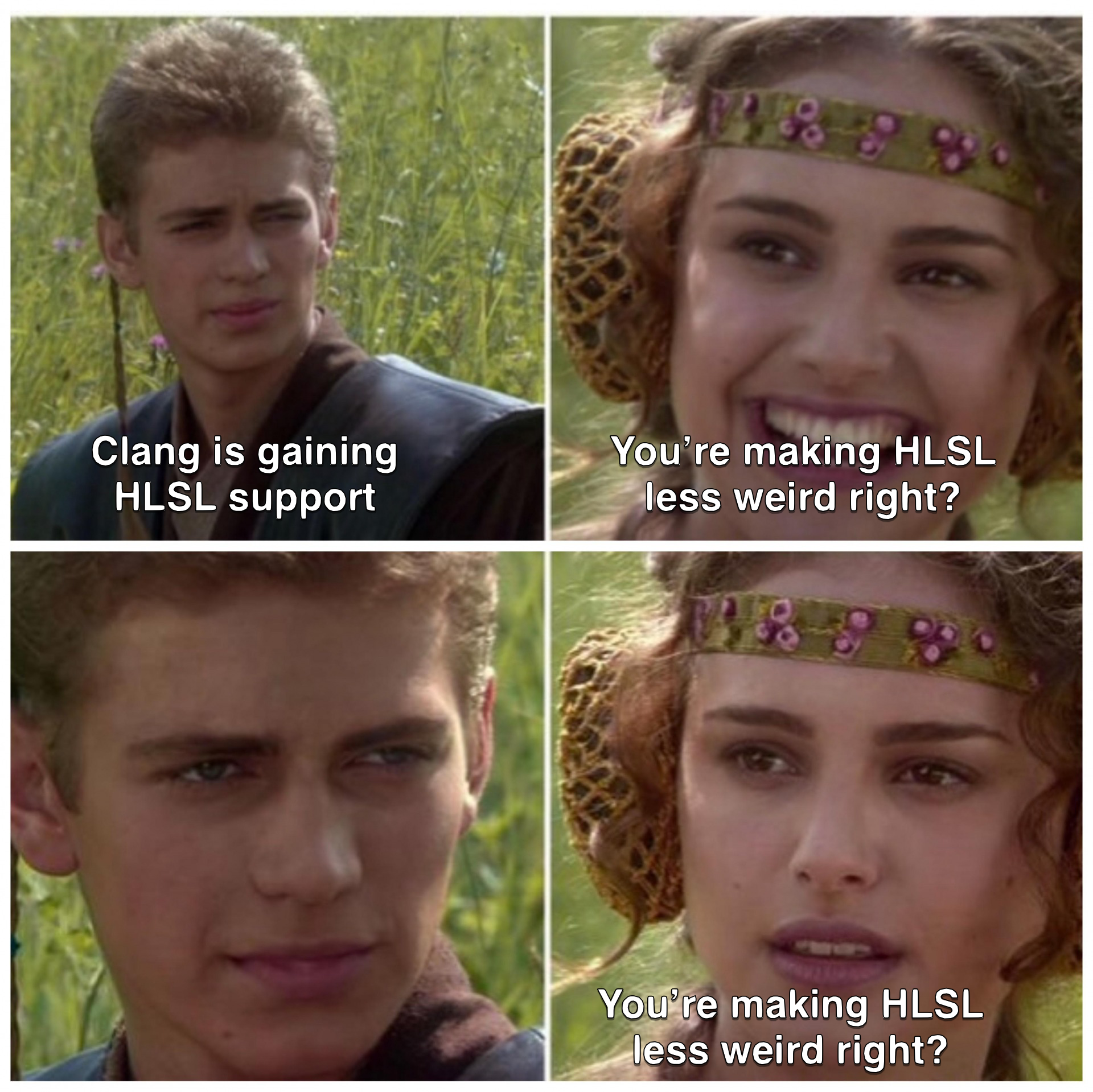How many elements are in the array?
static int2 Arr[] = {
int2(0,1),
int2(2,3),
int4(4,5,6,7),
};
A. 3
B. 4
C. Clearly this is an error right?
Answer!
B!
In the days before DXC, HLSL’s type system took heavy inspiration from functional programming languages. This history has some big impacts that are still with HLSL today.
One of those impacts is what I call HLSL’s “floatly-typed” nature: every scalar value can be viewed as a float or collection of floats. The other is HLSL’s somewhat weak typing of structures.
Both of these impacted how aggregate initialization is defined in HLSL.
To try and simplify the wording, HLSL ignores braces {} in initializer lists
and flattens all the argument structures down to an ordering if individual
scalar elements. The same transformation is then performed to the initialization
target. If the number of scalar elements to initialize on the left equals the
number os scalar arguments on the right, and each argument can be converted to
the corresponding element type on the left; you have a valid initializer.
This gets a bit complicated with incomplete array types because you don’t know the full size of the array from just looking at the assignment target, but the logic is basically the same. It flattens the array element type, flattens the initializer, and figures out how many elements can be initialized.
See it here in Compiler Explorer.
The discussion of this code snippet sparked some of my favorite conversations with users to date.

Pretty overwhelmingly users expressed a desire that this be an error (or at least a loud warning), because the behavior is pretty unintuitive.
It’s also behavior that is extremely simple to rely on in ways that you really don’t expect.
The HLSL team is tracking a proposal to change this in a future language version, however this behavior will be supported in Clang.

We’ve found that removing this language support is massively disruptive to codebases migrating to Clang, so we’re supporting the old behavior in Clang and planning to support tooling to assist in removing this behavior in the future.